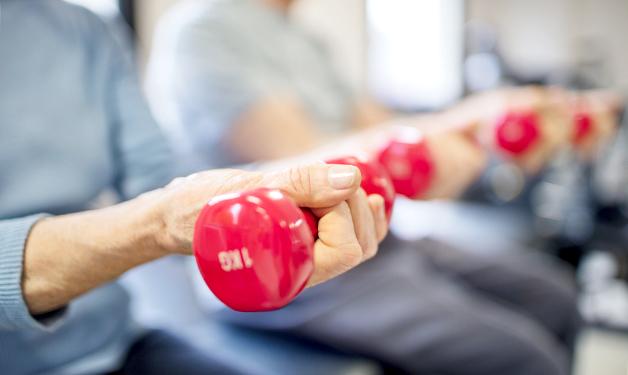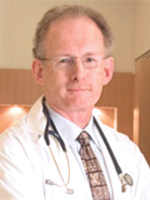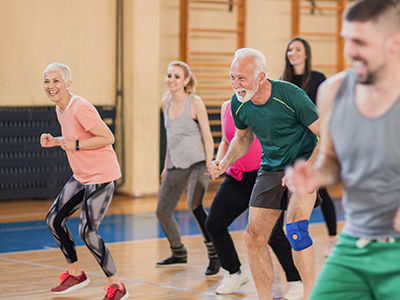
Portable ultrasound may offer best snapshot of sarcopenia.
Adults over 85 years old make up the fastest growing population segment in Canada. With frailty being prevalent among older Canadians, it’s vital to be able to accurately measure muscle loss–a major contributor to frailty–and intervene if necessary to improve health outcomes and quality of life, says Vancouver Coastal Health Research Institute (VCHRI) scientist Dr. Graydon Meneilly.
“Reduced muscle mass, also known as sarcopenia, has a lot of negative health implications for older adults such as reduced daily function and increased risk of falls and fractures,” says Meneilly.
“Sarcopenia is a marker for frailty-related health risks. Some studies have suggested that interventions such as adding more protein to one’s diet and increasing levels of exercise can improve sarcopenic patients’ health outcomes.”
Meneilly along with VCHRI colleague Dr. Kenneth Madden are currently studying whether portable ultrasound can offer a superior snapshot of sarcopenia in older adults than current screening tools.
“It’s problematic that some of the existing screening tools for sarcopenia are complicated and involve multiple measurements, which are difficult to reproduce,” Meneilly explains. “Health professionals do not agree on the gold standard and there are questions around whether or not these measurements are sensitive or specific enough.”
“Our goal is to determine if using a portable ultrasound can give us a robust measure of sarcopenia.”
Study shows how new screening tool measures up
For their study, the researchers recruited 150 older adult patients from the Vancouver General Hospital (VGH) Diabetes Centre, as well as the Falls Prevention Clinic at VGH. The researchers used portable ultrasounds (Vscan, GE) to measure participants’ thigh muscle thickness and fat thickness. These measurements were then correlated with other measurements typically used for measuring sarcopenia, such as grip strength, gait speed, and bioelectric impedance to measure lean body mass. Participants also completed functional assessments on how well they are able to perform certain daily living activities, such as cooking, cleaning, shopping, bathing, walking, etc.

“While our preliminary results are promising, our next step is to do further work comparing ultrasound to dual-energy X-ray absorptiometry (also known as DEXA), which is an enhanced form of X-ray used for measuring bone density, but it’s also considered by some as the best way to measure muscle density,” says Meneilly. “However, the issue with DEXA is that it exposes patients to radiation and typically has to be done in a radiology clinic whereas a portable ultrasound can be done at bedside.”
The implications of discovering an accurate and highly accessible way to measure muscle mass loss are significant for sarcopenic older adults, as well as their caregivers and Canada’s health care system as a whole.
“If somebody is sarcopenic, then you know that their risk of poor outcomes after an event such as surgery is going to be higher and this presents two choices: either to not proceed with the surgery because the risk is too high, or to do an intervention (like exercise) before the surgery to prevent those poor outcomes post-surgery.”

“If you improve sarcopenia, people are less likely to fall and therefore more likely to be able to remain active, which means less reliance on the health care system and greater ability to live independently healthy,” he says.
“Anything you can do to identify this abnormality and treat it may not add years to life, but it might add life to years.”


